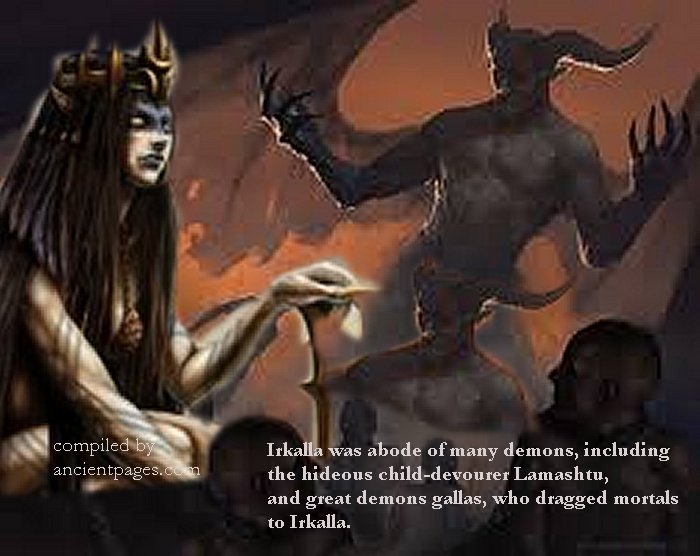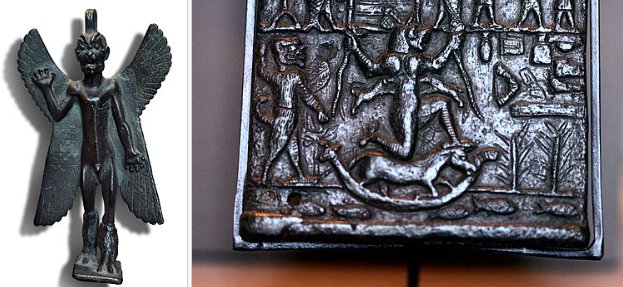Irkalla – Underworld With No Return Ruled By Ereshkigal, Granddaughter Of Enlil And Sister Of Inanna
A. Sutherland - AncientPages.com - In Babylonian mythology, Irkalla was the underworld from which there was no return. The realm of the dead or the lower world was also called Arali, Kur, Kigal, and Gizal.
There were two traditions explaining how humans entered the netherworld. According to one, the road to the underworld passed through the steppe land swarming with demons, across the Khabur River, and then through seven heavily guarded gates.
Another version described a road to the netherworld crossed by boat down one of the rivers of the upper earth. Then, across the apsu (the sweet waters under the earth) to Irkalla, the lower earth.
At first, the only ruler of Irkalla was Ereshkigal ("Queen of the Great Below"), a granddaughter of Enlil and older sister of Inanna (Ishtar). Later she ruled the netherworld with her husband, Nergal, the king of death who brings disease, plague, and all misfortunes caused by heat. Ereshkigal's judgment and laws were always indisputable.
Irkalla was the abode of many demons, including the hideous child-devourer Lamashtu, the fearsome wind demon and protector god Pazuzu, and great demons Gallas (or Gallu) busy with dragging mortals to Irkalla.
Location Of Irkalla
Based on various texts, it can be assumed that the Babylonians located the entrance to the underground world, where the sunset was in the western desert.
Left: Bronze statuette of Pazuzu (c. 800 – c. 700 BC). Credit: Public Domain - Right: Close-up of Lamashtu from a lead protection plaque dating to the Neo-Assyrian Period (911 – 609 BC). Credit: Public Domain
The Babylonian sun god, Shamash, descended to these regions in the evening. Then, he appeared again from the mountains in the east in the morning. The netherworld was situated even lower than the Abzu, the fresh-water ocean beneath the earth.
Grave Of The Deceased – The Entrance To Irkalla
In Babylonian writings, the grave was the entrance to the underground world for the man who was buried in it. The Sumerian beliefs inspired the Babylonian myths, which were later repeated and further developed.
All people, regardless of their positions, age or morals, descended after death to Irkalla. It was the same afterlife for all souls.
The only food or drink was dry dust, but family members of the deceased would pour libations for them to drink.
In "The Ark Before Noah: Decoding the Story of the Flood," Irving Finkel cites a description of Irkalla as a dreary place: The netherworld was described as a dreary place:
To the gloomy house, seat of the netherworld,
To the house which none leaves who enters,
To the road whose journey has no return,
To the house whose entrants are bereft of light,
Where dust is their sustenance and clay their food.
They see no light but dwell in darkness,
They are clothed like birds in wings for garments,
And dust has gathered on the door and bolt..."
(The Descent of Ishtar to the Netherworld" 4-11)
Not all views of the afterlife were the same among ancient beliefs of other cultures.
Unlike other views of the afterlife, in the Sumerian underworld, there was no final judgment of the deceased. The dead were neither punished nor rewarded for their deeds in life. Their burial conditions determined a person's quality of existence in the underworld.
Ancient Sumerian cylinder seal impression showing the god Dumuzid being tortured in the underworld by galla demons. Credit: Public Domain
As the dark underground realm, cut off from life and God, Irkalla was the ultimate destination for all who died. The domain is similar to Sheol (She'ol) of the Hebrew Bible, where all the dead - righteous and the unrighteous – must meet. It happens regardless of the moral choices and deeds made in life.
But at the same time, it is very different from more hopeful visions of the afterlife that later appeared in Platonic philosophy, Judaism, and Christianity, unlike visions of the ancient Egyptian afterlife.
After crossing the Hubur river, the deceased (naked or clothed in feathers like birds) stood in front of the seven city walls and had to pass through seven gates guarded by the guards. The ruler would pronounce them dead, and their names would be recorded on a tablet by a scribe.
In Irkalla, the deceased had to face Ereshkigal as they were born – naked, without garments and personal ornaments.
Written by – A. Sutherland AncientPages.com Senior Staff Writer
Updated on October 5, 2022
Copyright © AncientPages.com All rights reserved. This material may not be published, broadcast, rewritten or redistributed in whole or part without the express written permission of AncientPages.com
Expand for referencesReferences:
Black J., Green A. Gods, Demons and Symbols of Ancient Mesopotamia
Finkel I. The Ark Before Noah: Decoding the Story of the Flood"
More From Ancient Pages
-
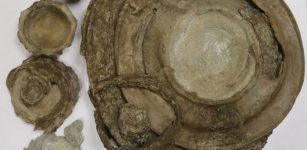 Rare 2,000-Year-Old Roman Hoard Discovered In Suffolk
Archaeology | Jul 5, 2023
Rare 2,000-Year-Old Roman Hoard Discovered In Suffolk
Archaeology | Jul 5, 2023 -
 Patara Lighthouse Built By Emperor Nero In 64 AD Will Shine Again
Archaeology | Mar 5, 2020
Patara Lighthouse Built By Emperor Nero In 64 AD Will Shine Again
Archaeology | Mar 5, 2020 -
 Cardinal Richelieu ‘Red Eminence’ – One Of The Greatest Politicians In French History
Featured Stories | Oct 26, 2018
Cardinal Richelieu ‘Red Eminence’ – One Of The Greatest Politicians In French History
Featured Stories | Oct 26, 2018 -
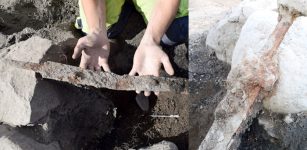 Unexpected Discovery Of Two Viking Swords In Upright Position In Sweden
Archaeology | Oct 27, 2022
Unexpected Discovery Of Two Viking Swords In Upright Position In Sweden
Archaeology | Oct 27, 2022 -
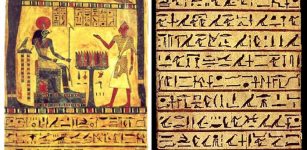 Strange History Of Stele Of Ankh-ef-en-Khonsu – ‘Stele Of Revealing’ Gave Birth To Thelema, A New Religion
Artifacts | Apr 3, 2018
Strange History Of Stele Of Ankh-ef-en-Khonsu – ‘Stele Of Revealing’ Gave Birth To Thelema, A New Religion
Artifacts | Apr 3, 2018 -
 Secrets Of Mysterious Bronze Age Hoard Found In Rosemarkie, Scotland Revealed
Archaeology | Jul 31, 2024
Secrets Of Mysterious Bronze Age Hoard Found In Rosemarkie, Scotland Revealed
Archaeology | Jul 31, 2024 -
 Mythical Underground Labyrinth And Legendary Long-Lost Golden Tomb Found In Italy?
Featured Stories | Nov 21, 2024
Mythical Underground Labyrinth And Legendary Long-Lost Golden Tomb Found In Italy?
Featured Stories | Nov 21, 2024 -
 Archaeologists Uncover More Hidden Ancient Secrets In Saqqara, Egypt
Archaeology | Jan 6, 2025
Archaeologists Uncover More Hidden Ancient Secrets In Saqqara, Egypt
Archaeology | Jan 6, 2025 -
 Paris Catacombs: Huge Underground Labyrinth Full Of Secrets
Featured Stories | Jan 3, 2016
Paris Catacombs: Huge Underground Labyrinth Full Of Secrets
Featured Stories | Jan 3, 2016 -
 On This Day In History: Germany Invades Poland – On Sep 1, 1939
News | Sep 1, 2016
On This Day In History: Germany Invades Poland – On Sep 1, 1939
News | Sep 1, 2016 -
 Medieval City Dating Back To The Great Northern War Discovered In Tartu, Estonia
Archaeology | Jan 8, 2021
Medieval City Dating Back To The Great Northern War Discovered In Tartu, Estonia
Archaeology | Jan 8, 2021 -
 What Was The Danelaw?
Ancient History Facts | Jun 4, 2016
What Was The Danelaw?
Ancient History Facts | Jun 4, 2016 -
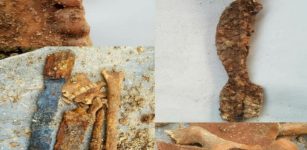 Ancient Tomb Chamber Of Parthian Warrior Was Accidentally Unearthed In Iran
Archaeology | Apr 30, 2020
Ancient Tomb Chamber Of Parthian Warrior Was Accidentally Unearthed In Iran
Archaeology | Apr 30, 2020 -
 On This Day In History: American Astronomer Edwin Hubble Announced Existence Of Other Galaxies – On Dec 30, 1924
News | Dec 30, 2016
On This Day In History: American Astronomer Edwin Hubble Announced Existence Of Other Galaxies – On Dec 30, 1924
News | Dec 30, 2016 -
 Rene Descartes – Independent French Thinker And His Main Ideas
Featured Stories | Apr 27, 2021
Rene Descartes – Independent French Thinker And His Main Ideas
Featured Stories | Apr 27, 2021 -
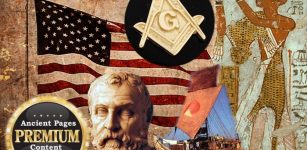 Freemasons Secrets – American Democracy Is Part Of An Ancient Universal Plan – Egyptian Temple And Legendary Expedition Hold The Clues – Part 2
Civilizations | Jul 13, 2018
Freemasons Secrets – American Democracy Is Part Of An Ancient Universal Plan – Egyptian Temple And Legendary Expedition Hold The Clues – Part 2
Civilizations | Jul 13, 2018 -
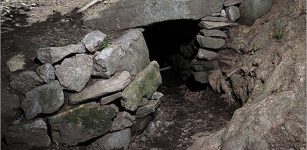 Ancient Mystery Of Upton Chamber Cave In Massachusetts: One Of The Largest Ancient Man-Made Structures In New England
Featured Stories | Oct 10, 2017
Ancient Mystery Of Upton Chamber Cave In Massachusetts: One Of The Largest Ancient Man-Made Structures In New England
Featured Stories | Oct 10, 2017 -
 Ancient City Of Adab That Flourished In North Sumer
Civilizations | Jul 19, 2017
Ancient City Of Adab That Flourished In North Sumer
Civilizations | Jul 19, 2017 -
 The Name Vatican And Etruscan Goddess Vatika Of The Underworld – What Is The Connection?
Featured Stories | Jun 6, 2020
The Name Vatican And Etruscan Goddess Vatika Of The Underworld – What Is The Connection?
Featured Stories | Jun 6, 2020 -
 A New William Shakespeare First Folio discovered on Isle of Bute, Scotland
Archaeology | Apr 10, 2016
A New William Shakespeare First Folio discovered on Isle of Bute, Scotland
Archaeology | Apr 10, 2016

